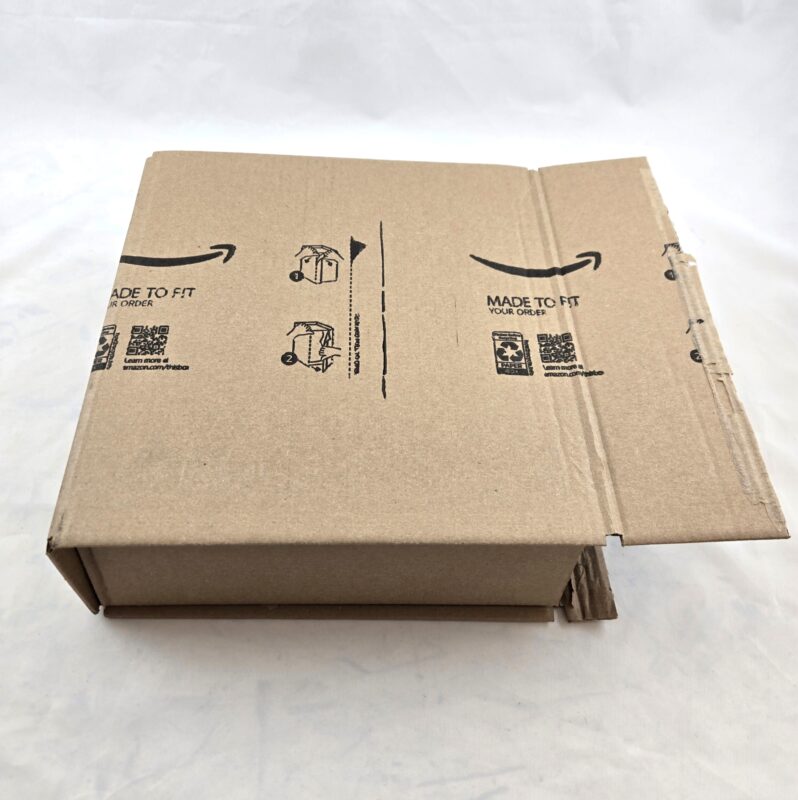America has always had a love-hate relationship with corrugated boxes. E-commerce consumers love the protection a corrugated box can provide but dislike having to deal with the disassembly, flattening, and recycling of the boxes they receive at home. “Curb Side Recycling” is a great idea, but not if the consumer is not doing it.
Amazon, I believe, shares those love-hate feelings, so to reduce the potential customer packaging complaints as well as the cost over the years, they have looked at many potential solutions. These include:
- Right Size Box use – this effort has mostly failed because of the many complexities including packaging inventory and cost.
- SIOC (ships in own container) encourages sellers to provide products in ready to ship boxes. This may include discounts if you do, and penalties if you don’t, assuming the initial (primary” container is indeed “shippable” and will hold up during the shipping cycle.
- Mailer Envelopes – the use of plastic and paper envelopes is increasing rapidly, but drawbacks include difficulty to recycle or repurpose the envelope after receipt.
- Made to Fit Boxes – A more recent solution complete with pluses and minuses as outlined below.
How are Made to Fit boxes created.
Rather than buying premade boxes, a large volume user can buy sheets and essentially make boxes on demand or on an as needed basis. This is done utilizing a large, costly piece of equipment that will cut, fold/score, form and glue (this will be important later) the sheets to create the right size boxes.
Amazon Made to Fit Boxes Pluses
FINALLY! Right sizing made easy! I write that tongue in cheek because there is nothing easy about it. However, it will help reduce shipping cost based on dimensional weight. That can result in a substantial savings to the shipper and/or the recipient.
Undoubtedly, Amazon buys boxes by the truckload, but this may help them avoid having large quantities of lower usage boxes on hand. I’m sure someone has done the math, but I find it hard to believe that Amazon using this type of machine can do it at a lower cost compared to a high speed, large volume box production plant.
As the included box photos show, this type of equipment does offer some one-color printing capability, but the quality is nowhere near what is possible on a multi-color flexographic press. Also, the way the box is constructed and glued, it is probably stronger than a standard RSC style box which is primarily what Amazon uses. That of course assumes the adhesive works the way it’s supposed to work.

Amazon Made to Fit Disadvantages
As described above, an inventory of sheets must be maintained and handled, bringing them to the machine that will convert them into boxes. Then the made boxes have to be delivered to the packaging station.
Depending on the size range of the boxes required, sheets of a variety of sizes may be necessary. Are all your boxes the same board grade? If not, where is the inventory cost and space reduction?
If a costly piece of hardware is required, who will change over, maintain and fix the box maker when necessary? Are labor costs factored in?
I don’t know the price tag on this type of machine, but I doubt it is thousands or even tens of thousands of dollars. In other words, you have to have a LOT of volume to justify the expenditure.
As the final “plus” shown above states, this style of box depends on the effectiveness of the hot melt adhesive being used, how much, and where it is applied. I have read on line customer reports of boxes arriving popped open during shipment. There have even been more reports of boxes with so much adhesive that they become almost impossible to open. Take it from a guy who has spent most of his adult life selling packaging systems, that is the nature of hot melt glue. You may ask, why don’t they use cold glue? Because cold adhesive requires time and pressure not available for this type of operation.
No Corrugated Axe to Grind
It’s an old expression but in this case it is true. We do not sell boxes or sheets to Amazon so how they make or use boxes does not directly affect us. However, as a consumer, I am often asked to help open a Made to Fit box when one arrives at home, so understandably, this can be a major problem for the elderly, those with arthritis or other handicaps.
A few weeks ago, we celebrated the 17th anniversary of our Inside Sustainable Packaging Blog which we started one year after we launched our now 18-year-old company. We have been sharing information and perspectives from almost the beginning because we realized the value of helping our customers understand why we provide the guidance we do. Educated Customers = Happy, Loyal Customers.
Please call us at 630-551-1700 or contact us through this web site. We would enjoy and appreciate an opportunity to discuss your specific needs with you.
Related posts:
https://www.salazarpackaging.com/blog/how-shifts-in-consumer-purchasing-impacts-e-commerce/
https://www.salazarpackaging.com/blog/beginners-guide-to-e-commerce-packaging-design/
https://www.salazarpackaging.com/blog/how-a-good-packaging-design-can-reduce-your-3pl-costs/
https://www.salazarpackaging.com/blog/5-packaging-services-for-cost-reduction/

